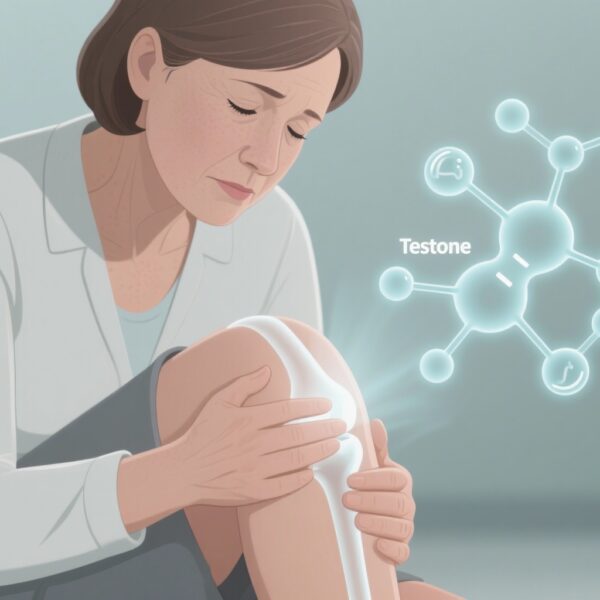Highlight
– A pooled analysis of 131 longitudinal studies identified prior knee injury (OR 2.67, 95% CI 1.41–5.05), older age (OR 1.15, 95% CI 1.00–1.33) and high bone mineral density (OR 1.82, 95% CI 1.12–2.94) as significant predictors of incident radiographic knee osteoarthritis (KOA).
– Overweight/obesity and prior knee injury together accounted for an estimated 14% of incident radiographic KOA, indicating meaningful but partial preventable burden.
– Occupational physical activity and other modifiable exposures contribute to KOA risk; life-course prevention strategies—weight management, injury prevention, and workplace ergonomics—are priorities.
Background and disease burden
Knee osteoarthritis (KOA) is a leading cause of pain, disability and reduced quality of life worldwide. Prevalence rises sharply with age and is strongly associated with loss of mobility, work limitation and increased healthcare utilization. Although symptomatic KOA is the clinical problem driving treatment and disability, radiographic KOA remains a widely used endpoint in epidemiology and is informative about structural disease onset. Identifying validated, modifiable risk factors across the lifespan is essential to design primary prevention strategies and to prioritize public health interventions.
The recent systematic review and meta-analysis by Duong et al. (Osteoarthritis Cartilage, 2025) synthesises longitudinal evidence on incident KOA from more than 130 studies and evaluates population attributable fractions for modifiable exposures. The study provides an updated, comprehensive evidence base to inform prevention and research agendas.
Study design and methods
Scope and eligibility
This review included longitudinal cohort studies and randomized controlled trials assessing incident symptomatic and/or radiographic KOA. Eligible studies were identified through seven electronic databases and three registries. Two independent reviewers completed study selection and data extraction.
Outcomes and synthesis
Primary outcomes were incident radiographic and symptomatic KOA. Effect estimates (odds ratios, hazard ratios, risk ratios) were pooled using random effects meta-analysis. The Grading of Recommendations, Assessment, Development and Evaluation (GRADE) framework was used to assess certainty of evidence. For selected modifiable exposures significantly associated with radiographic KOA, population attributable fractions (PAFs) were calculated where communality (overlap between risk factors) could be estimated using existing datasets.
Key findings
Study corpus and risk factor breadth
The review identified 131 studies assessing more than 150 candidate risk factors across demographic, clinical, biomechanical, behavioural and occupational domains. This breadth underlines the multifactorial nature of KOA risk but also creates heterogeneity in measurement and definitions.
Risk factors with strongest pooled associations (radiographic KOA)
– Prior knee injury: pooled OR 2.67 (95% CI 1.41–5.05), moderate-to-high certainty. Prior traumatic or structural knee injury was consistently associated with substantially higher risk of later radiographic KOA.
– Older age: pooled OR 1.15 (95% CI 1.00–1.33), moderate-to-high certainty. Age is a robust risk marker; the pooled estimate reflects the consistent, graded association observed across cohorts.
– High bone mineral density (BMD): pooled OR 1.82 (95% CI 1.12–2.94), moderate-to-high certainty. Higher systemic BMD showed an association with increased risk of structural knee changes, consistent with hypotheses linking subchondral bone properties to osteoarthritis pathogenesis.
Modifiable risk factors and population impact
– Overweight and obesity: individually associated with incident KOA across many studies. When combined with prior knee injury, overweight/obesity contributed substantially to population burden: together these two exposures accounted for an estimated 14% of incident radiographic KOA in the PAF calculations performed by the authors.
– Occupational physical activity: evidence indicates that heavy manual work or prolonged knee-straining activities are implicated in increased KOA risk in multiple cohort studies; estimates vary by occupation classification and exposure intensity.
– Other modifiable factors: the review reports associations for smoking, systemic inflammatory markers, muscle weakness, alignment, and metabolic factors in some studies, but pooled effect estimates and certainty varied widely.
Symptomatic KOA
Risk patterns for symptomatic KOA overlapped with radiographic disease (age, obesity, injury), but fewer pooled analyses were reported for symptomatic endpoints and certainty was generally lower due to heterogeneity in symptom definitions and follow-up methods.
Certainty and heterogeneity
GRADE assessments ranged from low to high depending on the exposure and outcome. The clearest, most consistent evidence with moderate-to-high certainty supported prior injury, age and high BMD as predictors of radiographic KOA. Heterogeneity in exposure measurement, case definitions (radiographic grade thresholds, symptom criteria), follow-up duration and adjustment for confounders limited certainty for several candidate factors.
Clinical and mechanistic interpretation
The strong association between prior knee injury and later KOA aligns with mechanistic understanding: ligamentous tears, meniscal damage and intra-articular fractures cause local instability, altered load distribution, cartilage disruption and joint inflammation that accelerates structural degeneration. This provides a direct causal pathway and supports secondary prevention strategies after injury (e.g., optimized rehabilitation, targeted risk-reduction in sports and work).
Obesity increases joint loading and is associated with systemic metabolic inflammation; both mechanical and metabolic effects likely contribute to cartilage breakdown and synovial changes. The finding that overweight/obesity contributes to the population burden supports weight management as a cornerstone of KOA prevention.
The association with high BMD suggests a role for subchondral bone stiffness and altered bone-cartilage interactions in KOA pathogenesis. This is biologically plausible but complex; whether modifying BMD would alter KOA risk is uncertain and would require specific interventional evidence.
Occupational knee-straining activities likely increase cumulative mechanical load on articular surfaces and periarticular soft tissues, explaining the excess risk observed among certain manual workers.
Implications for practice and policy
– Prioritize weight management across the life course. Even modest weight loss reduces knee load and is associated with symptom improvement in KOA; population-level obesity prevention could reduce incident cases.
– Strengthen injury prevention and post-injury care. Sports safety measures (e.g., neuromuscular training), workplace safety, and structured rehabilitation after ACL/meniscal injuries may reduce progression to KOA.
– Address workplace exposures. Ergonomic interventions, job redesign, and protective policies for workers with high knee-loading tasks may reduce exposure and long-term risk.
– Adopt life-course approaches. Interventions in adolescence and midlife to prevent obesity, promote musculoskeletal fitness, and prevent knee injury may yield downstream reductions in KOA burden decades later.
Limitations and research gaps
– Observational evidence and residual confounding: many pooled estimates derive from observational cohorts where unmeasured confounding and reverse causation (for some exposures) cannot be fully excluded.
– Heterogeneity in definitions: variable thresholds for radiographic KOA, inconsistent symptom measures, and divergent exposure assessments limit comparability across studies.
– Communality and PAF estimation: the 14% PAF for overweight/obesity and prior injury is informative but constrained by available communality estimates; actual preventable fractions may vary by population prevalence and exposure clustering.
– Lack of interventional evidence: while risk factor associations are established, randomized trials demonstrating that modifying these risks reduces incident KOA are few. Translational studies linking risk modification to structural outcomes (not just symptoms) are needed.
– Age as a non-modifiable risk marker: age remains a strong determinant of KOA; prevention must therefore focus on modifiable contributors and resilience across ageing.
Expert commentary
This comprehensive meta-analysis reinforces priorities long advocated by clinical guidelines: weight management and injury prevention are central to KOA prevention. However, the modest PAF (14% for two major modifiable exposures) emphasises that KOA is multifactorial and many drivers remain unaddressed. A combined public health and clinical approach—integrating obesity prevention, safer sport/work environments, and early rehabilitation—offers the best chance to reduce population burden.
From a research perspective, future work should aim for harmonized exposure and outcome definitions, longer follow-up across diverse populations, and randomized prevention trials targeting high-risk groups (e.g., obese individuals with knee injury) with structural endpoints when feasible.
Conclusion
Duong et al.’s lifespan systematic review provides robust evidence that prior knee injury, older age and higher bone mineral density are associated with incident radiographic KOA, and that modifiable factors—particularly obesity and injury—contribute materially to population burden. The findings argue for implementing and scaling prevention strategies spanning weight management, injury prevention and occupational safety, while recognising the need for better interventional evidence and life-course research to fully address the multifactorial nature of KOA.
Funding, registration and practical notes
The systematic review was registered in PROSPERO (ID: CRD42023391187). Funding details should be consulted in the original publication (Duong et al., Osteoarthritis Cartilage 2025). Clinicians and policymakers should interpret PAFs in light of local exposure prevalence and feasibility of intervention.
Selected reference
Duong V, Abdel Shaheed C, Ferreira ML, et al. Risk factors for the development of knee osteoarthritis across the lifespan: A systematic review and meta-analysis. Osteoarthritis Cartilage. 2025 Mar 31;33(10):1162-1179. doi:10.1016/j.joca.2025.03.003. PMID: 40174718.



